New 1981-2010 Averages being used this year.
Note: This publication is currently undergoing major revisions. The current publication will be replaced with a new publication based on stakeholder requirements and scientific advances. We expect to begin sharing details on this soon. If you have input on content, format, or publication frequency at any time, please contact us at cbrfc.webmasters@noaa.gov.Lower Colorado Water Supply Outlook, April 1, 2012Lower Colorado Water Supply Outlook, April 1, 2012
Contents
Lower Colorado Summary
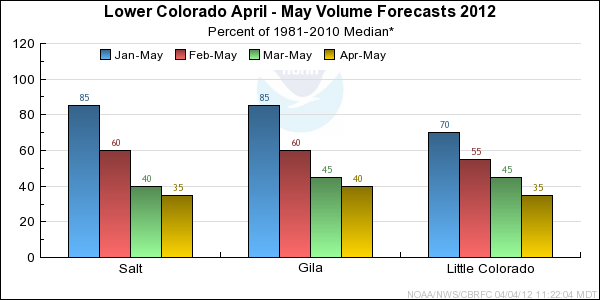
*Median of forecasts within each basin.
Salt Basin Conditions
The following conditions influenced this month's forecasts:
Precipitation:
Seasonal October-March
precipitation was
near 75 percent of average in the upper Salt River Basin and Verde River Basin.
March
precipitation was 55 percent of average in the upper Salt River Basin and 85 percent in the
Verde River Basin.
Streamflow:
March streamflow was near 35 percent of median on the Salt River, 15 percent of median on the Tonto, and 40 percent of median
on the Verde River.
Snow:
The snowpack has been all but depleted with only isolated pockets of snow remaining in high elevation
protected areas.
Salt River Basin
Snow Plot.
Verde River Basin
Snow Plot.
Soil Moisture:
Soil moisture conditions were below average at the onset of the runoff period
due to dry conditions late last summer and most of the winter. The wettest soils existed
in the Salt River Basin, however these have become drier as the snow has melted
and below average precipitation occurred in March.
Climate Forecasts:
La Nina climate conditions suggest decreased chances for precipitation in this area.
The La Nina influence was accounted for in generation of these forecasts.
Forecast Summary:
Much below average precipitation occurred in March while the remaining snow melted. Seasonal
precipitation dropped to below average from last month.
These conditions are consistent with La Nina climate conditions that currently
exist. Below average precipitation and below median runoff are observed more
frequently during La Nina events. April-May
forecast volumes range from 31 to 50 percent of
median.
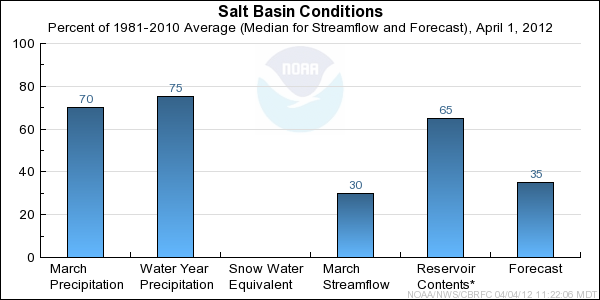
* Percent usable capacity, not percent average contents.
Click for multi-month Graph.
Gila Basin Conditions
The following conditions influenced this month's forecasts:
Precipitation:
Seasonal October-March
precipitation
was 80 percent of average.
March
precipitation was 40 percent of average.
Streamflow:
March streamflow was around 40 percent of median.
Snow:
The snowpack has been depleted in the Gila River Basin with only isolated pockets of snow
at higher elevations in the San Francisco Basin.
Upper Gila Basin
Snow Plot.
San Francisco Basin
Snow Plot
Soil Moisture:
Very dry conditions in the Gila Basin for several months has resulted in below average
soil moisture conditions.
Climate Forecasts:
La Nina climate conditions suggest decreased chances for precipitation in this area.
The La Nina influence was accounted for in generation of these forecasts.
Forecast Summary:
The Gila River Basin has experienced below average precipitation for most of the winter and all of last summer.
Runoff conditions have subsequently been much below median throughout the winter
and early spring. These conditions have been consistent with La Nina climate condtions
that currently exist. Although La Nina conditions are expected to weaken into early summer,
climate outlooks suggest below average precpitation into early summer. April-May
forecast volumes range from 5 to 55
percent of median.
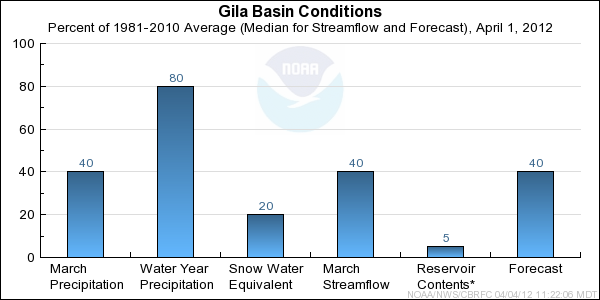
* Percent usable capacity, not percent average contents.
Click for multi-month Graph.
Little Colorado Basin Conditions
The following conditions influenced this month's forecasts:
Precipitation:
Seasonal October-March
precipitation was near
75 percent of average .
March
precipitation was 55 percent of average throughout the Little Colorado Basin.
Streamflow:
March streamflow on the Little Colorado at Lyman was near 90 percent of median.
Snow:
Snowpack has been depleted in the Little Colorado Basin. Only isolated pockets of snow
remain at highest elevations.
Little Colorado
Snow Plot
Central Mogollon Rim
Snow Plot
Soil Moisture:
Below average seasonal precipitation resulted in below average soil moisture conditions in the headwater locations.
Climate Forecasts:
La Nina climate conditions suggest decreased chances for precipitation in this area.
The La Nina influence was accounted for in generation of these forecasts.
Forecast Summary:
The presence of La Nina climate conditions suggest below average precipitation through
the spring. Below average seasonal precipitation exists over most of the Little Colorado Basin,
with below average soil moisture conditions in the headwaters. Snowpack was below average
for the season and has since melted off. April-May streamflow volumes are
forecast to range from near 10 to 41 percent of median.
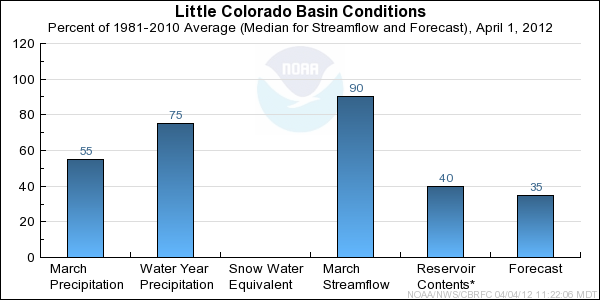
* Percent usable capacity, not percent average contents.
Click for multi-month Graph.
Differences between the full period forecasts and the residual forecasts may not exactly equal the actual observed volumes due to rounding conventions (see Definitions section).
Monthly Streamflows
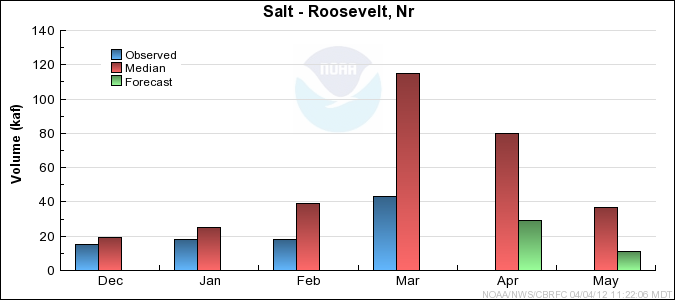
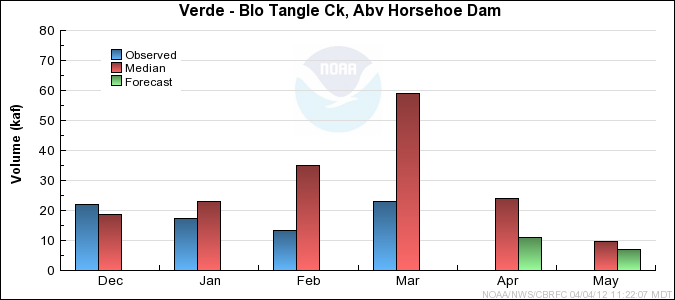

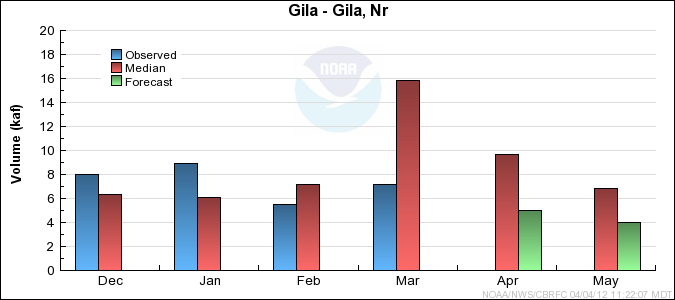
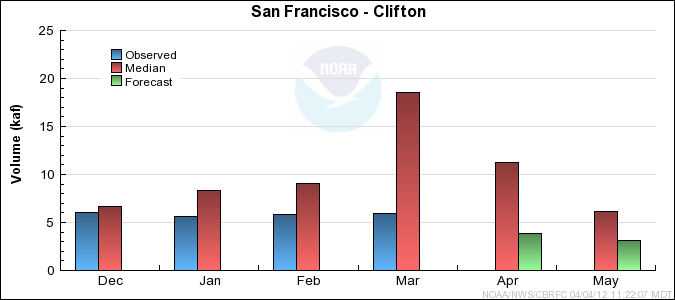
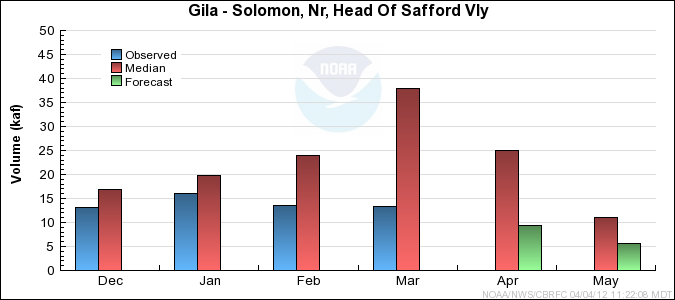
Precipitation Maps
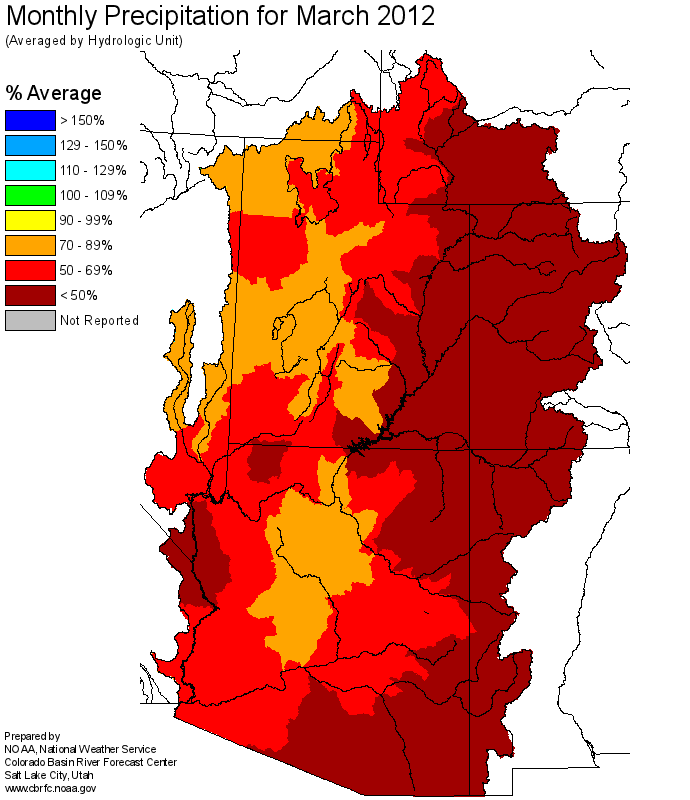
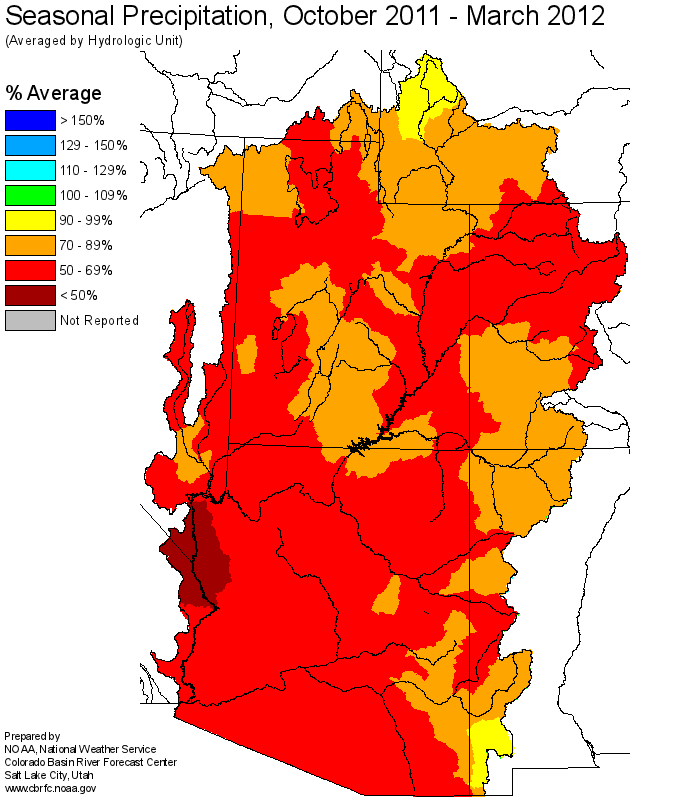
Hydrologist: T.Cox













